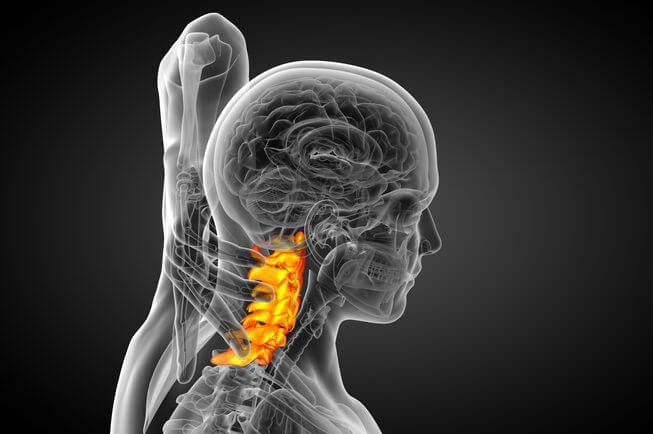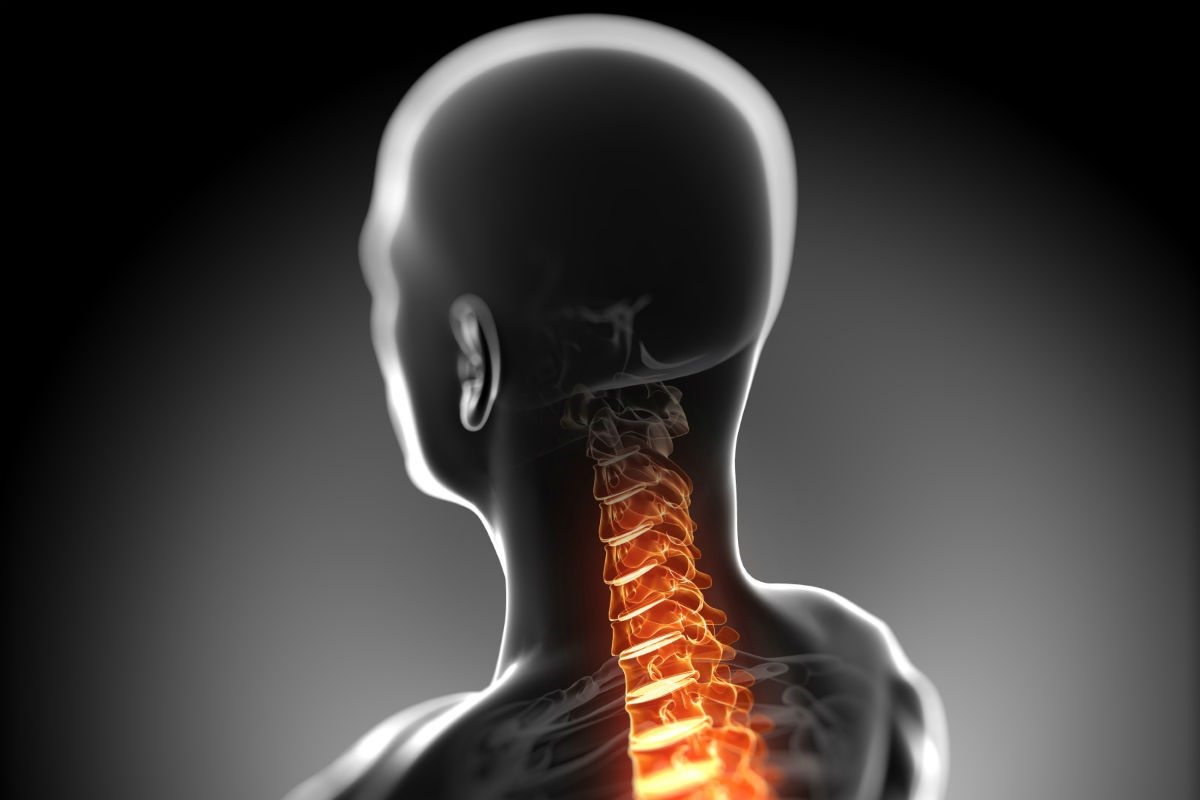
Cervical stenosis: symptoms, causes, diagnosis and treatment
The term cervical stenosis refers to a narrowing of the cervical vertebral canal, a structure that contains the spinal cord and the origin of the cervical spinal roots, resulting in compression of the spinal cord
Degenerative cervical canal stenosis of arthritic origin is very frequent among the elderly, because it is related to the physiological ageing of the individual
It evolves slowly and can be aggravated by concomitant causes that worsen the degenerative picture by giving rise to the formation of osteophytes, small bone spurs that form along the joint margins.
Symptoms of cervical stenosis
Symptoms vary depending on the severity of the cervical cord and nerve damage.
Generally, the patient experiences pain in the neck and shoulders, which may radiate to the arm and hand, resulting in cervicalgia and cervicobrachialgia, weakness in the upper limbs and, last but not least, neurological deficits in sensitivity and strength in the upper limbs, since compression of the spinal cord does not allow optimal transmission of the nerve stimulus along the arm, leading to tingling and loss of sensitivity.
Causes of cervical stenosis
The conditions that can favour the appearance of cervical stenosis are:
- Paget’s disease;
- herniated discs;
- malformations and deviations of the spine;
- spondylosis or severe trauma to the spine.
Risk factors that tend to aggravate it are diabetes, obesity and smoking.
Diagnosis
The diagnosis of cervical stenosis involves 3 steps:
- the traditional X-ray of the neck
- CT scan, which is very important for diagnosing degenerative canal stenosis as it better defines bone lesions;
- MRI of the cervical spine, which is very useful for assessing the situation of the intervertebral discs and the cervical cord.
How cervical stenosis is treated
Treatment varies depending on the severity and cause of onset.
The approach can be
- conservative for milder stenoses, which involves, on the one hand, the administration of anti-inflammatory drugs and, on the other, the prescription of osteopathic and/or physiotherapeutic treatments;
- surgical treatment, which is indicated in more serious cases and is aimed at decompressing the nerve structures and preserving vertebral stability.
An absolute surgical treatment for canal stenosis does not exist because we are dealing with degeneration of the bone and its stage must be evaluated; through the use of surgery we can certainly slow down the progression of the disease and consequently improve the patient’s quality of life.
Decompressive laminectomy
One of the most widely used surgical techniques is decompressive laminectomy, which is certainly effective in creating space for the bone marrow to ‘breathe’.
A surgical solution that is not only necessary but also indispensable in the many cases in which, unfortunately, canal stenosis is combined with cervical trauma: clinical situations that can degenerate into myelopathy, i.e. damage to the spinal cord.
Foraminotomy
For stenosis of the conjugation foramen, on the other hand, foraminotomy can achieve good results as it relieves the pressure on the nerves that are compressed in the intervertebral foramen.
Cervical stenosis should be addressed by a multidisciplinary approach
Cervical stenosis mainly affects people aged 50 and over, while it is rare in young people.
However, in the course of their lives, sufferers of cervical stenosis have experienced repeated traumatic events, such as whiplash.
In these cases, thanks to a multidisciplinary approach involving physiatrist, physiotherapist, osteopath, and neuroradiologist, targeted rehabilitation programmes are very useful, together with therapies such as tecar therapy, laser therapy, or the CTU diamagnetic pump, treatments that not only provide relief, but also prevent the situation from worsening.
Read Also:
Emergency Live Even More…Live: Download The New Free App Of Your Newspaper For IOS And Android
Lumbago: What It Is And How To Treat It
Back Pain: The Importance Of Postural Rehabilitation
Cervicalgia: Why Do We Have Neck Pain?



